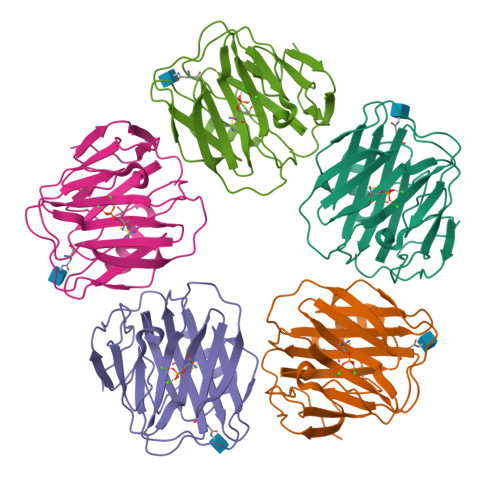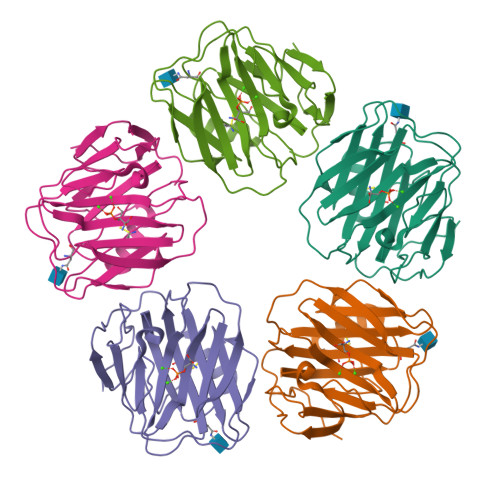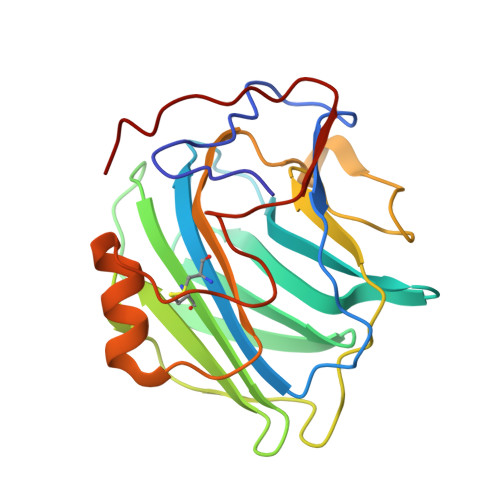Molecular Dissection of Alzheimer'S Disease Neuropathology by Depletion of Serum Amyloid P Component.
Kolstoe, S.E., Ridha, B.H., Bellotti, V., Wang, N., Robinson, C.V., Crutch, S.J., Keir, G., Kukkastenvehmas, R., Gallimore, J.R., Hutchinson, W.L., Hawkins, P.N., Wood, S.P., Rossor, M.N., Pepys, M.B.(2009) Proc Natl Acad Sci U S A 106: 7619
- PubMed: 19372378
- DOI: https://doi.org/10.1073/pnas.0902640106
- Primary Citation of Related Structures:
2W08 - PubMed Abstract:
New therapeutic approaches in Alzheimer's disease are urgently needed. The normal plasma protein, serum amyloid P component (SAP), is always present in cerebrospinal fluid (CSF) and in the pathognomonic lesions of Alzheimer's disease, cerebrovascular and intracerebral Abeta amyloid plaques and neurofibrillary tangles, as a result of its binding to amyloid fibrils and to paired helical filaments, respectively. SAP itself may also be directly neurocytotoxic. Here, in this unique study in Alzheimer's disease of the bis(d-proline) compound, (R)-1-[6-[(R)-2-carboxy-pyrrolidin-1-yl]-6-oxo-hexanoyl]pyrrolidine-2-carboxylic acid (CPHPC), we observed depletion of circulating SAP and also remarkable, almost complete, disappearance of SAP from the CSF. We demonstrate that SAP depletion in vivo is caused by CPHPC cross-linking pairs of SAP molecules in solution to form complexes that are immediately cleared from the plasma. We have also solved the structure of SAP complexed with phosphothreonine, its likely ligand on hyperphosphorylated tau protein. These results support further clinical study of SAP depletion in Alzheimer's disease and potentially other neurodegenerative diseases.
Organizational Affiliation:
Centre for Amyloidosis and Acute Phase Proteins and National Amyloidosis Centre, Division of Medicine (Royal Free Campus), University College London Medical School, London NW3 2PF, United Kingdom.



















